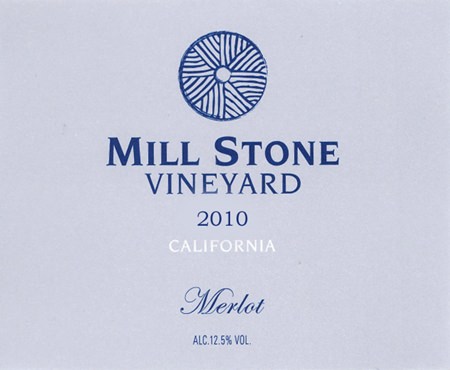Some people – and evidently quite a few waiters – seem to believe that having removed the cork from a wine bottle, you should then leave it to stand for a couple of minutes so that the air can get to it. Now if you give this a moment’s thought, you’ll realise that this is nonsense. I’ll tell you why. When a bottle is opened, only a tiny surface area of wine in the neck of the bottle is exposed to the air and this is nowhere near enough to make a significant difference to the taste. If you want the wine to get some air (or more accurately, the oxygen in the air) it’s better to pour it into a decanter or wine jug. If there isn’t one, just pour it into the glasses and let it rest for a few minutes.
There’s only one reason to wait for a few seconds before pouring the wine and that’s to let any residual sulphur dioxide escape. This chemical has been used in wine-making for centuries because it’s an anti-microbial agent and also acts as an antioxidant. On very rare occasions you might get a tiny whiff of sulphur dioxide when you open the bottle, but it should dissipate within a few moments. Incidentally, there’s a big different between aerating wines and decanting them. Aerating simply involves allowing the wine some oxygen contact, either by pouring it into another container or by using a special aeration device. Decanting is usually done to separate the wine from any sediment lurking at the bottom of the bottle. This sediment is produced naturally by bottle ageing but usually you’ll only find sediment in very old red wines.

This business about wine aeration is a bit of a battle-ground among wine experts. For example, Professor Emile Peynaud, the legendary French enologist holds the opinion that any oxygen damages the aroma and you should pour wine straight out of the bottle into the glasses. In the opinion of British wine expert Hugh Johnson, most wines improve with aeration. Oddly enough, when I was much younger, I used to prefer my wine poured straight from the bottle because it tasted firmer and seemed to have a more concentrated, tighter body. These days, I nearly always pour wine into a decanter, unless of course it’s a sparkler. I’ve found that some wines “open up” more than others and occasionally a wine seems to smell and taste better even twenty minutes after opening. But no doubt the illustrious Professor Peynaud would disagree. I suppose in the end, aeration is largely a matter of personal taste. If you want your wines tasting tight and firm, pour them straight from the bottle but if you want them to open up a bit, pour them first into a decanter or wine jug.
And by the way, a decanter doesn’t need to be a heavy ornamental thing with a glass bung stuck in the top. By all means use an ornate decanter if these things turn you on but I use simple, absolutely plain ones made of light glass, bought at the kitchen shop next door to Foodland. They come in a variety of sizes down to 25cl, which is a third of a bottle. These small ones are excellent if you are keeping a sensible eye on your wine consumption. If you are sharing a bottle with two other people, you can pour the entire contents into three 25cl decanters. This ensures that everyone gets an equal share and avoids unseemly fist-fights or other unpleasantness.
Mill Stone Vineyards Merlot 2010 (red), California USA (Bt. 440 @ Friendship)
Both the wines this week were quite a bargain at the old price of Bt. 395 and even with the recent tax hike the new prices are still reasonable. This Merlot (mehr-LOH) is a dark red colour with an attractive aroma of red berry fruits, black cherries, plums and somewhere in the background, a dash of spice. But you’ll need to give the aroma time to develop, so this is probably one of those wines that taste better after aeration. It has a very soft texture and it’s completely dry with just the slightest touch of acidity. You’ll find that the mouth-feel softens considerably after about twenty minutes of air contact.
There are very mild tannins – hardly any at all really but even so, the wine reminds me of the light reds from southern France. You might pick up a very soft touch of tannin on the long dry and slightly peppery finish. A long finish (which is the length of time the flavour stays in your mouth after you’ve swallowed the wine) is usually one of the signs of a well-made wine. This is made in a rather commercial easy-drinking style and at just 12.5% ABV it’s not too high in alcohol. There’s an attractive “edge” to the taste, so I think this wine would probably go well with pasta dishes if you don’t happen to have a bottle of Italian red to hand.
Mill Stone Vineyards Cabernet Sauvignon 2010 (red), California USA (Bt. 440 @ Friendship)
Well then, here’s a surprise. I was quite expecting to say that if you prefer softer wines, go for the Merlot and if you like something a bit drier and leaner, try the Cabernet Sauvignon (ka-behr-NAY soh-vihn-YOHN). However, in the case of these two little numbers, the opposite turns out to be true.
Sampled side-by-side, both the wines look pretty much the same in the glass but there the similarity ends. The aroma of the Cabernet is more reserved than the Merlot and reminds me of black berry fruit with a suggestion of mint. The wine is very dry but exceptionally smooth and silky on the palate with plenty of jammy black cherry fruit which gives the wine the tiniest hint of sweetness. Oddly enough, there’s hardly any tannin at all, but the finish is satisfyingly long and fruity.
If you know anyone who avoids red wine because they don’t like the tannins or find them too assertive, give them a swig of this easy-drinker. I think it would go down well with some of my Thai friends too. It’s a soft and undemanding wine that, at 12.5% alcohol would be fine on its own, but it would go well with many cheeses. Some people prefer dry whites with Brie and Camembert, and I admit that Sauvignon Blanc or Pinot Gris work splendidly, but low-tannin reds also make good partners.
And don’t forget to buy a few of those glass decanters next time you get paid. The small ones cost less than seventy baht each, and should last you for years unless of course, you manage to drop them.




